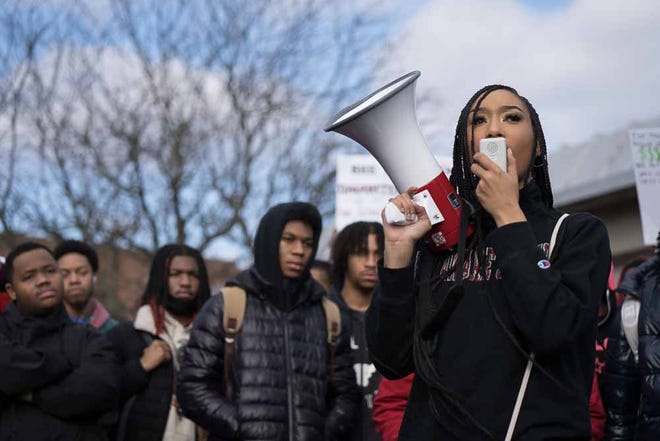It’s been a tumultuous spring semester in Dover.
Late January saw an explosive protest take hundreds of students out of class, filling a campus street in protest of public safety at Delaware State and the handling of sexual assault cases. Later, students stood, spoke, and cried in multiple town hall meetings that stretched for hours at a time. They demanded a safer campus. They demanded sexual assault reports be taken more seriously at their university.
This week another update comes in Delaware State’s response — to the tune of $300,000.
The National Organization of Sisters of Color Ending Sexual Assault awarded the HBCU a two-year grant to assist in developing its sexual assault response and prevention program, first announced in late January in the wake of campus unrest. The “Safe Space Project” will be housed on DSU Downtown campus.
“The funding will be primarily used for DSU to support those students victimized by violence and sexual assault,” said Gwen Scott-Jones, dean of Wesley College of Health and Behavioral Sciences, in a press release.
Also the chair of the university’s new coalition aimed at these issues, Scott-Jones said the space will promote prevention, provide education, and organize outreach in the Delaware State community.
At a glance:
What: The “Safe Space Project” is a physical location aiming to offer support to survivors of sexual assault, family members, allies and other advocates. The program will host a part-time, licensed mental health professional and coordinator, according to Delaware State, who will provide “culturally specific prevention and advocacy.”
Where: Services will be based inside the university’s “Hope House” at 34 N. State Street, on DSU Downtown campus. This converted Dover home is currently used for a food bank, drug and alcohol use support groups and research — but these newly focused supports will be an addition.
When: It was difficult for the university to pinpoint when the Safe Space will be fully operational, with outfitting to do and personnel to put in place. Some activities and operations will likely open sooner than others, said Director of News Services Carlos Holmes, but “the Safe Space Project’s use of the Hope House will begin as soon as possible.”
Holmes also confirmed the space will continue to be available after the two-year grant, as Delaware State has committed to fusing it with overall planning and programming for the Hope House.
So how did we get here?

Students came out in protest on Jan. 18. University meetings followed that week and the next, each closed to the public and in one case having media escorted out of the auditorium. Students and family also attended the university’s budget hearing Feb. 2 at Legislative Hall, calling for the same change on a new Dover platform.
Speakers called for:
- More security across main campus and DSU Downtown
- Education and awareness programs across the university and police
- Increased counselors and experts available to students
- Facility improvements, with students noting struggles with water and building security.
Student organizers said they also want the school to “fortify the integrity” of its Title IX process — increasing trust and transparency while treating cases as time-sensitive. This violence isn’t unique to Delaware State, but the school saw 10 rapes reported in 2022, four other reports in January and another from a parent on Feb. 7. One family spoke out about feeling unsupported when her daughter reported an assault.
‘Something’s happening to my child’:One survivor’s family says it knows public safety culture at Delaware State, all too well
A Letter from DSU’s president: ‘It isn’t what we say or think that defines us, but what we do’ (Opinion)
University response has been rolling out.
The “Safe Space Coalition” was formed to focus on this work. Like several measures President Tony Allen announced, it joined promises to upgrade campus lighting and cameras, update the blue lights system, garner body cameras for university police and assess existing escort services and counseling hours. Allen did not give an exact timeline for the efforts.
The coalition is now comprised of parents, university personnel, community members and over 100 students across nine committees. The core coalition is aimed at improving campus safety through recommendations to the president.